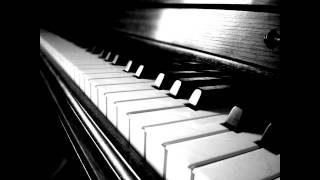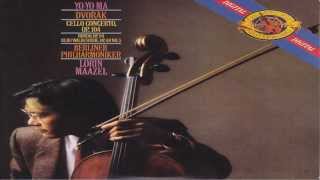Thursday, 11 December, 2025г.
















Где искать: по сайтам Запорожской области, статьи, видео ролики
пример: покупка автомобиля в Запорожье
Antonin Dvorak - Piano Concerto Op. 33 (1875)
Antonín Leopold Dvořák ( 8 September 1841 – 1 May 1904) was a Czech composer. After Bedřich Smetana, he was the second Czech composer to achieve worldwide recognition. Following Smetana's nationalist example, Dvořák frequently employed aspects, specifically rhythms, of the folk music of Moravia and his native Bohemia. Dvořák’s own style has been described as ‘the fullest recreation of a national idiom with that of the symphonic tradition, absorbing folk influences and finding effective ways of using them'
Piano Concerto in G Minor, Op. 33 (1875)
I. Allegro agitato
II. Andante sostenuto
III. Allegro con fuoco
Rudolf Firkušný, piano and the Saint Louis Symphony Orchestra
conducted by Walter Susskind
Description by Blair Johnston [-]
Antonín Dvorák composed his only virtuoso vehicle for pianoforte and orchestra during the late summer months of 1876, at the prompting of a notable Czech pianist. The Piano Concerto in G minor, Op. 33, is often described as Dvorák's first effort at concerto composition, but in fact this is not so: he had, a dozen or so years earlier, made what might be called a first draft of a concerto for cello and orchestra -- an apprentice piece that quite naturally pales when placed next to his mature cello concerto of 1894-1895. It is usually, but certainly not always accurately, assumed that a pianoforte concerto is a vehicle for better and loftier musical thoughts than is a concerto for string instruments (the assumption goes back to Mozart and Beethoven, for whom it does indeed hold true), and Dvorák -- himself far more a string player than a pianist -- seems to have approached his Piano Concerto with that assumption in mind. The work is epic in style, grand in architecture, and sewn from an immediately and urgently dramatic fabric very different in kind from that used for the Violin Concerto, Op. 53, of just a few years later.
Even Dvorák devotees, however, are forced to admit that the Piano Concerto is not a completely successful piece of music. Some of the problems come from the piano writing, which is at times imbalanced and unwieldy. Many pianists have edited and rewritten the pianoforte part of the concerto over the years, but, in the end, something is lost in these rewrites. It takes a superb pianist to pull off Dvorák's original, but it can be done: This performance shows it clearly and convincingly.
There is a full orchestral exposition at the start of the Allegro agitato first movement (again unlike the Violin Concerto, in which the soloist intrudes after just a few bars). The principal theme is symphonic in tone; the second theme veers towards something very chorale-like. A bombastic cadenza is the only sure sign that the work is not really a symphony accidentally scored for piano and orchestra.
The Andante sostenuto in D major is serene, and follows a harmonic path full of quiet surprises. The Allegro con brio finale is started by the soloist, a vintage Beethoven move, and proceeds to romp around in vintage Dvorák style; there is an undisguised Bohemianism to the energetic principal ideas of this rondo.
Похожие видео
Мой аккаунт


 У вашего броузера проблема в совместимости с HTML5
У вашего броузера проблема в совместимости с HTML5![Piano Concerto no. 1 - Pyotr Ilyich Tchaikovsky [with score - 2/2]](/images/mq/b/8a/844fypUc4Cqdff.jpg)


